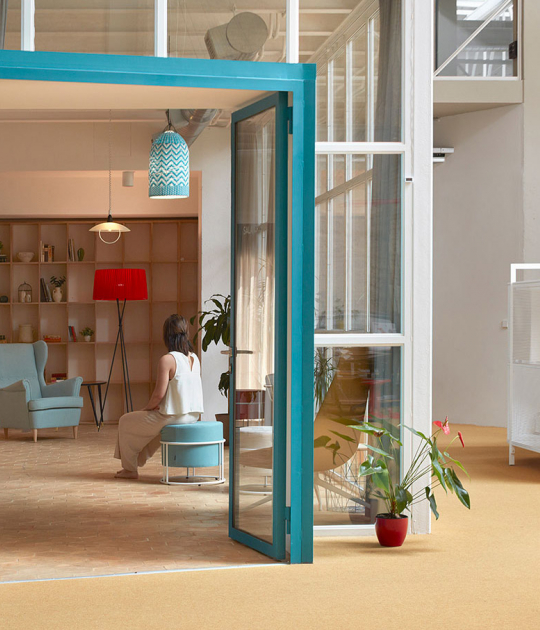Architect in 1949 by the School of Architecture of Madrid with Extraordinary Prize End of Degree he obtained the title of Urban Technician in 1951 and the Doctorate in 1956. Julio Cano Lasso was Architect Advisor to the General Directorate of Urban Planning in the sixties, as well as Numerary Member of the Royal Academy of Fine Arts of San Fernando in 1990, and Gold Medal of Architecture in 1991.
The bibliography on the figure and work of Julio Cano Lasso continues to grow, and the city of Madrid and many municipalities in the Community can proudly display the buildings he built, imbued with the same strength they had when they were erected. The exhibition is completed with monographic books, magazines, models, and audiovisual material.
The bibliography on the figure and work of Julio Cano Lasso continues to grow, and the city of Madrid and many municipalities in the Community can proudly display the buildings he built, imbued with the same strength they had when they were erected. The exhibition is completed with monographic books, magazines, models, and audiovisual material.
"Architecture and cities have a value and significance that exceed their immediate usefulness. They are the traces of man in history and are part of geography. They are humanized geography. They must age nobly, as the Earth ages".
Julio Cano Lasso. Conversations with an architect of the past. Dialogue of Technique and Spirit.
At the same time, the Ministry of Transport, Mobility, and Urban Agenda have published the book, also entitled "Julio Cano Lasso. Naturalezas", edited by Inmaculada Maluenda and Enrique Encabo, dedicated to his work, with content focused on the fusion in time between Architecture and Nature.
It includes unpublished essays by Juhani Pallasmaa, William Curtis, Juan Navarro Baldeweg, Iñaki Ábalos, Pep Llinás, Atxu Amann & Andrés Cánovas, Ángel Martínez García-Posada, José Manuel Sanz and Luis Suárez Mansilla. And a current photographic report by Iwan Baan.
"Over time, my idea of modernity has been changing. Modernity is a temporary value and as such ephemeral. Contemporaries value in it the particularities of their time and circumstances, whose validity disappears inexorably for later generations and only the effective value of the work remains, perhaps. I am interested in modernity in the sense of progress and I believe that progress must be measured in spiritual terms".
Julio Cano Lasso.
Both in the book and the exhibition his texts and projects are analyzed and it can be seen that his ideas on the relationship between Man, Architecture, and Nature are very current and can be a reference for the new generations.
A stroll through this bibliography is finally the satisfactory remembrance of what is already known and the discovery of more unknown facets of this master of masters.








































